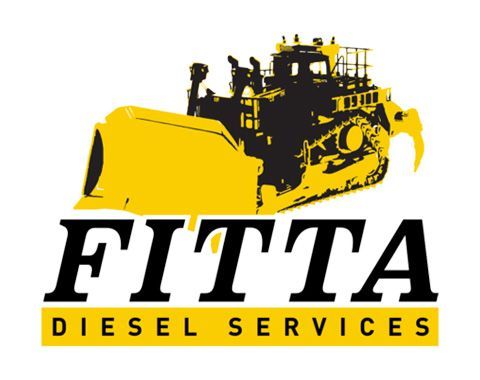The importance of undercarriage maintenance for excavators
The undercarriage of an excavator is its foundation, literally. This complex system of components, including tracks, rollers, idlers, and sprockets, is responsible for the machine’s stability, mobility, and overall performance. A well-maintained undercarriage is essential for efficient operation and can significantly reduce the risk of costly repair down the line. Neglecting undercarriage maintenance can lead to premature wear, decreased productivity, and increased downtime, ultimately impacting your bottom line.
In this blog post, we’ll examine the key components, common problems, and essential maintenance practices for excavator undercarriages.
Key undercarriage components
To understand undercarriage maintenance, it’s essential to familiarise yourself with the key components that make up this complex system. Each component plays a crucial role in the excavator’s operation and requires specific attention to ensure optimal performance and longevity. Let’s explore the primary components of an excavator undercarriage:
- Tracks: The tracks are the most visible part of the undercarriage, providing traction and stability. Rubber tracks are known for their versatility and reduced ground disturbance, while steel tracks are a preferred option for heavy-duty applications and abrasive terrain. Inspecting tracks for wear patterns, such as uneven wear or cracking, is crucial.
- Rollers (carrier and track rollers): Rollers support the excavator’s weight and guide the tracks. Wear and tear on rollers can manifest as flat spots, cracking, or seizing.
- Idlers: Idlers are located at the front and rear of the undercarriage, providing track tension and guiding the track. Inspect them for wear, damage, and proper alignment.
- Sprockets: Sprockets engage with the tracks, driving the excavator forward or backward. Worn or damaged sprockets can cause track slippage and accelerate undercarriage wear.
Common undercarriage problems and their causes
Even with diligent care, excavator undercarriages are subject to wear and tear due to the demanding nature of their work. Understanding the common problems that can arise and their underlying causes is crucial for implementing preventative measures and ensuring timely repairs. Here are some of the most frequent issues that affect excavator undercarriages:
- Track wear: Excessive or uneven wear on tracks can be caused by various factors, including abrasive ground conditions, improper track tension, and misalignment. Operating on hard surfaces, rocky terrain, or abrasive materials can accelerate wear.
- Roller and idler damage: Overloading the excavator, impact damage from obstacles, and inadequate lubrication can lead to roller and idler damage.
- Sprocket wear: Worn sprockets can cause track slippage, reducing efficiency and accelerating track wear.
- Track misalignment: Misalignment can result from improper track tension, worn components, or impact damage. This can cause uneven track wear and increased stress on other undercarriage parts.
- Oil leaks: Leaks in hydraulic lines, cylinders, or other components can lead to hydraulic fluid loss, reduced performance, and potential environmental contamination. Regular inspections are essential to address oil leaks.
Essential undercarriage maintenance practices
Proactive maintenance is key to maximising the lifespan and performance of your excavator’s undercarriage. By implementing a regular maintenance routine and following best practices, you can prevent premature wear, minimise downtime, and reduce operating costs. Here are some essential undercarriage maintenance tips we swear by:
- Visual inspections: Regularly inspect the machine’s undercarriage for signs of wear, damage, and missing components. Check for loose bolts, cracks, and any unusual wear patterns.
- Track tensioning: Proper track tension is crucial for optimal performance and longevity. Too much or too little tension can accelerate wear and damage.
- Cleaning: Keep the undercarriage clean by removing dirt, debris, and buildup. This prevents material from getting trapped between components and causing wear.
- Lubrication: Regularly lubricate rollers, idlers, and other moving parts according to the manufacturer’s recommendations. Proper lubrication reduces friction and wear.
- Track shoe replacement: Replace worn track shoes within a reasonable timeframe to prevent damage to other undercarriage components.
Benefits of proper undercarriage maintenance
Investing time and effort in proper undercarriage maintenance yields significant returns in terms of equipment longevity, performance, and safety. By prioritising preventative maintenance and addressing issues as soon as they arise, you can reap numerous benefits, including:
- Increased lifespan: Regular undercarriage maintenance can significantly extend the life of your heavy equipment, reducing the frequency of costly replacements.
- Reduced operating costs: By preventing major failures and downtime, you can minimise repair expenses and keep your excavator working efficiently.
- Improved machine performance: A well-maintained undercarriage ensures optimal stability, mobility, and traction, enhancing overall machine performance.
- Enhanced safety: Proper undercarriage maintenance contributes to a safer working environment by reducing the risk of track slippage, component failure, and other hazards.
Get your excavator’s undercarriage checked out by Fitta Diesel Services
Although your excavator’s undercarriage is of utmost importance, we understand that you don’t have the time or skillset to keep up with constant maintenance. If your earthmoving and heavy equipment’s undercarriage needs a service, reach out to the team at Fitta Diesel Services. From general equipment maintenance to 24-hour repair, we have the expertise to keep your machines running smoothly with coverage across South East Queensland. Contact us today for reliable undercarriage maintenance and repair solutions that minimise downtime and maximise the lifespan of your valuable equipment.
